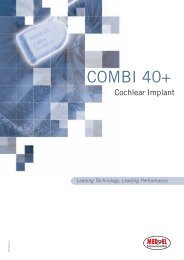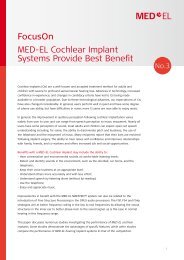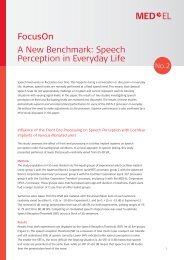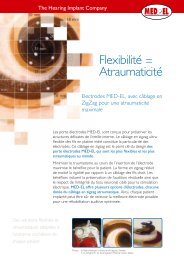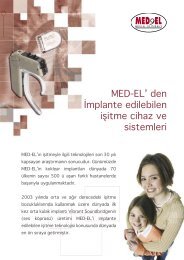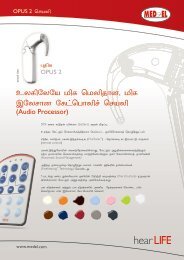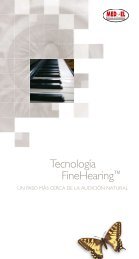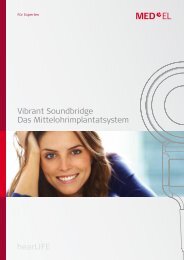My Diary - Med-El
My Diary - Med-El
My Diary - Med-El
Create successful ePaper yourself
Turn your PDF publications into a flip-book with our unique Google optimized e-Paper software.
DATE:<br />
1. Did you notice anything interesting about your child this week?<br />
The next milestone of speech development: canonical babbling<br />
Auditory development goes hand in hand with speech development. When children use their<br />
voices now, their utterances start to reflect their mother tongue more and more. Children will<br />
start to take on more of the melody and the sounds of their native language. They start with<br />
repeating the same syllable over and over again (babababa); but later they differentiate these<br />
sequences (mabamaba). In the next stage they start to combine different consonants and vowels<br />
to form the syllables of their first words (da-da). This stage of speech development is called<br />
“canonical babbling.” Children with normal hearing are in this phase at 6 to 10 months of age,<br />
before they gradually move on to the phase of their first words (Jargon). To be able to get to the<br />
phase of canonical babbling, children need to hear and take in the sounds of speech (vowels<br />
and consonants). A hearing impairment is often recognized in children when this babbling<br />
phase doesn’t start, or when babbling sounds very unnatural. This is also a sign of insufficient<br />
amplification. When children don’t hear enough to be able to perceive speech, they will not<br />
develop speech and language themselves. When children are fitted with hearing aids or a<br />
cochlear implant that facilitates speech perception, they often also start to babble. However,<br />
the exact time this starts can vary considerably from child to child.



